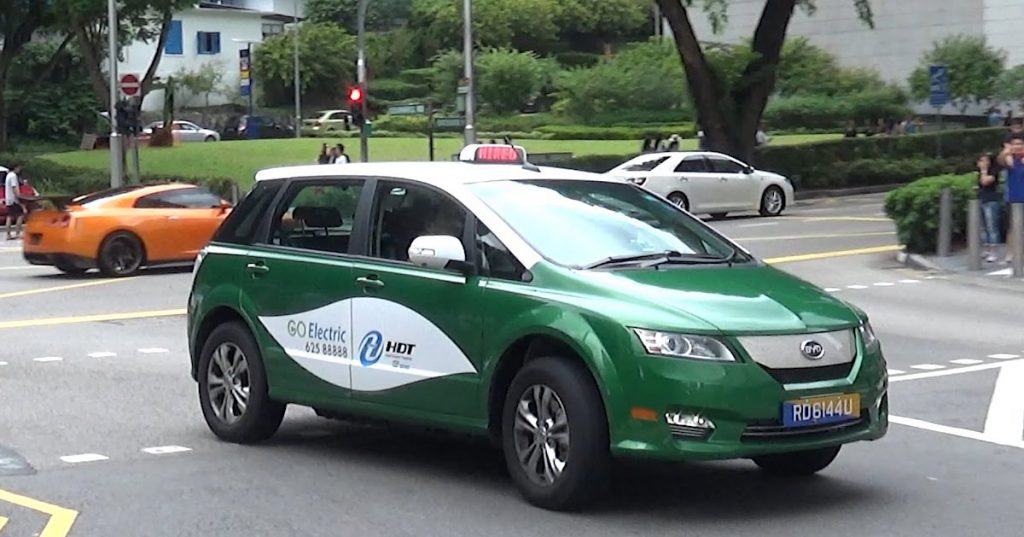Under fierce competition from private-hire car services Grab and Uber in recent years, cabbies have revealed that their incomes have been hit by at least 20 per cent to 30 per cent.
This is why when homegrown taxi firm Hold Dreams Together (HDT) hit the roads here in October last year, offering various employment benefits, many drivers were enticed to jump on the bandwagon.
HDT is the city’s first electric-powered cab operator. But beyond that, it garnered notable attention because of the ‘carrots’ the firm dangled to its drivers, which include basic salaries, CPF contributions, 6-day work week, as well as annual and medical leave.
According to The Sunday Times, HDT pays its drivers a starting monthly wage of $1,900, inclusive of Central Provident Fund (CPF) contributions, which can grow to a gross pay of $3,200 if a revenue target of $7,250 is reached.
About six out of 10 drivers meet the $7,250 target.
Beyond a target of $7,500, the driver and company enter into a progressive profit-sharing system, starting at a 45:55 ratio, in which the company bears the CPF contributions.
Bringing home a fixed salary means less financial concerns for most cabbies. But there are still some who feels that this model isn’t attractive enough as they prefer to rent cabs.
One particular driver The Straits Times interviewed remarked that it is not easy to hit the $7,500 target.
“It’s still better to rent a taxi, and I have the flexibility of how much I want to work daily,” he said.
Cabbies Abusing The System

Nonetheless, this employment scheme has hit a few bumps in the road, with cabbies misappropriating fare revenues and underperforming.
Managing director James Ng revealed that five drivers recently absconded with fare takings, each owing the company an average of around $2,000.
Unlike other cab operators who adopt the rental-hirer model – in which drivers keep all the fares they make – HDT drivers have to submit their revenue back to the company. It has since engaged lawyers to help recover the money.
Ng added that he also sacked another cabbie who unscrupulously collected a few hundred dollars in fares but overrode the taxi meter by entering a one-cent amount for those trips. This prevented the company’s systems from capturing the fare revenue.
In addition, there were three more drivers who were asked to leave due to their low productivity.
“They collected less than $100 in fares every day. I had a case, where after paying him a salary, I was left with almost nothing,” said Ng.
To counter these issues, Ng said the firm has hired dedicated staff a few months ago to track the drivers’ performance and revenues more closely.
Candidates will be interviewed more thoroughly, and drivers who do not perform will also be counselled, he added.
Despite these hiccups, the cab operator is sticking to its guns on its business model.
“We believe we are a preferred company. (Cabbies) outside are complaining that revenue-taking is uncertain. As long as you are working with us, your basic salary is always there,” said Ng.
In a previous interview with The Straits Times, Ng also described the model as a “realistic alternative to taxi drivers.” He added that the company sees the drivers as their “assets“, instead of the cars.
Commenting further on this, National Taxi Association executive adviser Ang Hin Kee said, “This option provides taxi drivers with an alternative besides the traditional hirer model where drivers carry the full risk.”
“There are some kinks here and there but an appropriately calibrated basic wage plus commission will help meet the business’ as well as most drivers’ needs.”
Where Does HDT Stand Amongst Other Taxi Firms?
HDT has been in the local taxi scene for less than a year now, so it’s safe to say that it is still a relatively new firm.
So how is this newbie cab operator competing with the other five taxi firms here in Singapore? A lower price point?
Nope.
The flag-down fare for HDT is $3.90, with a meter rate of 25 cents for ever 400m for the first 10km, and every 350m thereafter.
While this is pricier than the 22-cent meter rate charged by the bulk of the taxis here, Ng is optimistic commuters will prefer a ‘green’ ride.
“For a 10km ride, it’s about 75 cents more, but commuters will get to experience an electric car, which is more comfortable as they ride in total silence, compared to a car with a combustion engine,” he said.
But as we all know, most taxi drivers are losing out to private-hire car services such as Grab and Uber – and there’s also the recent entry of new player SixTNC.

Here’s the thing though: the company has about 30 e-cars that are available to commuters through Grab, so it’s not actually losing out in terms of market share.
However, the downside is that electric taxis on Grab app are not cheaper than a standard taxi or a GrabCar. So why would commuters opt for an electric taxi when there are other cheaper ride options such as JustGrab or GrabHitch?
Hence, I feel that although this partnership is helping HDT expand its user reach, it isn’t exactly helping the firm to secure more customers.
On the flip side, I think a competitive pricing strategy will work better for ‘kiasu’ Singaporeans.
I mean, just look at how much Grab and Uber has thrived in this competitive sector by rolling out regular promo codes!
Time to take notes, HDT.
Featured Image Credit: glitchFan2428 on YouTube
Also Read: From Aspiring Pilot To Captain Of CRAVE – The Sky’s The Limit For This Nasi Lemak Seller











